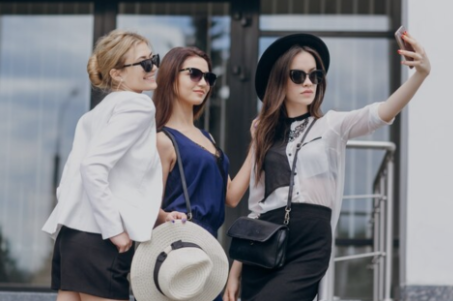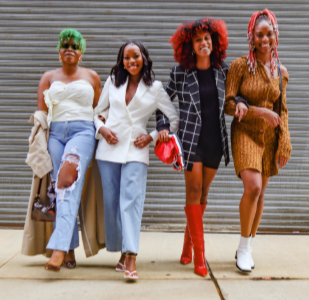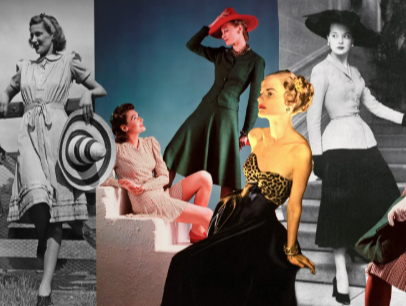Top Fashion Trends to Watch in 2025
As the fashion landscape evolves, 2025 promises to be a pivotal year marked by groundbreaking trends. Sustainable innovations will define the industry, while digital fashion is set to alter consumer engagement. Personalized styles will cater to individual expression, and gender fluidity will challenge traditional norms. Meanwhile, a resurgence of vintage aesthetics will offer a fresh take on nostalgia. These developments raise questions about their lasting impact on consumer behavior and industry standards.
Sustainable Fashion Innovations
As the fashion industry continues to evolve, sustainable fashion innovations are emerging as a pivotal force shaping the landscape of 2025. Designers are increasingly embracing eco-friendly materials, such as organic cotton, recycled fibers, and biodegradable fabrics, which not only reduce environmental impact but also resonate with conscientious consumers.
This shift towards sustainability aligns with the principles of a circular economy, where products are designed for longevity and recyclability, minimizing waste and encouraging reuse. Brands are implementing take-back programs and upcycling initiatives, empowering individuals to participate in a more responsible fashion culture.
As awareness grows, the demand for transparent, ethical practices will drive the industry towards a future where style and sustainability coexist harmoniously, offering freedom from environmental degradation.
Read more: How to Dress for Your Body Type: Fashion Tips for Every Shape
The Rise of Digital Fashion
While traditional fashion faces challenges from sustainability demands, the rise of digital fashion is redefining the industry landscape in 2025. This evolution is propelled by the emergence of virtual wardrobes, allowing consumers to curate and showcase their style without the environmental impact of physical clothing.
Augmented reality technologies enhance the experience, enabling users to virtually try on garments before purchase, thus bridging the gap between digital and physical realms. As fashion enthusiasts seek freedom in self-expression, digital fashion offers an innovative platform where creativity knows no bounds.
With designers exploring new artistic possibilities, the future of fashion is not just about what we wear, but how we interact with our identities in an increasingly digitized world.
Personalized and Customizable Styles
In a world where individuality reigns supreme, personalized and customizable styles have emerged as a defining trend in 2025. As consumers increasingly seek to express their unique identities, the demand for custom designs has surged.
Fashion brands are responding by offering bespoke tailoring options that allow individuals to select fabrics, colors, and cuts tailored to their preferences. This shift reflects a broader cultural movement towards self-expression and authenticity, empowering wearers to curate wardrobes that resonate with their personal stories.
The rise of technology facilitates this trend, with virtual fitting rooms and online design tools making customization more accessible than ever. Ultimately, personalized styles not only enhance individual freedom but also redefine the relationship between consumers and the fashion industry.
Gender Fluidity in Fashion
The fashion landscape of 2025 is increasingly characterized by a celebration of gender fluidity, reflecting a societal shift towards inclusivity and self-definition. Designers are embracing unisex styles that transcend traditional gender norms, allowing individuals to express their identities more freely.
This evolution in gender expression encourages a diverse array of silhouettes, fabrics, and colors that defy categorization. Labels are prioritizing versatility, creating collections that cater to all genders, thus fostering a sense of belonging among consumers.
As boundaries dissolve, the focus shifts to personal style over societal expectations, empowering people to curate wardrobes that resonate with their authentic selves. The rise of gender fluidity in fashion not only redefines aesthetics but also champions the power of individual choice in self-presentation.
Revival of Vintage and Retro Aesthetics
As the fashion world evolves, a prominent revival of vintage and retro aesthetics emerges, capturing the imagination of consumers seeking nostalgia and authenticity.
This trend reflects a collective yearning for simpler times, as designers draw inspiration from past decades, showcasing vibrant vintage patterns and iconic silhouettes. The resurgence of styles from the ’60s, ’70s, and ’80s resonates strongly, offering a unique blend of comfort and flair.
Retro accessories, such as oversized sunglasses and statement bags, further enhance these ensembles, allowing wearers to express individuality while embracing history.
This movement transcends mere fashion; it symbolizes a desire for freedom and self-expression, inviting individuals to curate personal narratives through timeless pieces that evoke emotion and connection.
Conclusion
As the fashion landscape evolves in 2025, these trends not only reflect a shift towards sustainability and inclusivity but also echo the timeless wisdom of past eras, reminiscent of a Renaissance in style. The integration of digital innovation and personal expression will redefine consumer engagement, while the revival of vintage aesthetics will serve as a poignant reminder of fashion’s cyclical nature. Embracing these transformative elements, the industry is poised for a future that honors both individuality and collective responsibility.




